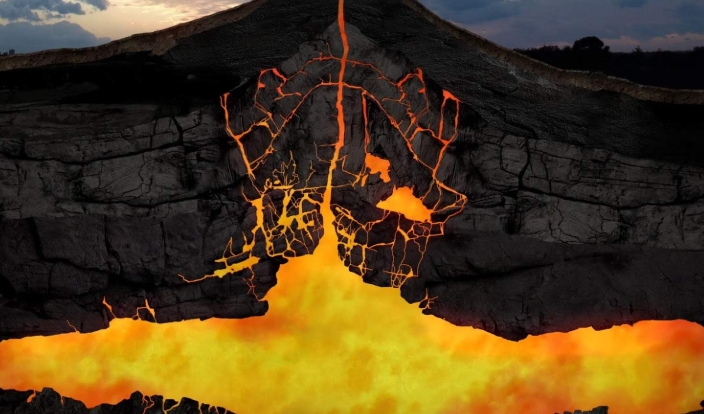Volcanoes are one of the most powerful forces of nature. They are capable of causing destruction on a massive scale, but they also play a crucial role in shaping the landscape of our planet. Understanding the characteristics of volcanoes can help us better prepare for and mitigate the risks associated with them.
Types of Volcanoes
There are three main types of volcanoes: shield volcanoes, stratovolcanoes, and cinder cone volcanoes. Shield volcanoes are broad and low, with gentle slopes formed by fast-flowing lava. Stratovolcanoes are tall and steep, with layers of ash, lava, and rock building up over time. Cinder cone volcanoes are small and steep, formed from ejected fragments of lava.
Volcanic Eruptions
Volcanic eruptions occur when magma from within the Earth’s mantle rises to the surface. The type of eruption can vary depending on the viscosity of the magma. Explosive eruptions occur when highly viscous magma traps gas bubbles, leading to a build-up of pressure that causes an explosive release of ash and rock. Effusive eruptions occur when low-viscosity magma flows easily, creating lava flows that spread out over the surrounding landscape.
Volcanic Hazards
There are several hazards associated with volcanic eruptions, including lava flows, pyroclastic flows, ash fall, and lahars. Lava flows can destroy buildings, infrastructure, and vegetation in their path. Pyroclastic flows are fast-moving and extremely hot clouds of gas, ash, and rock that can devastate everything in their path. Ash fall can cause respiratory problems and disrupt air travel. Lahars are fast-moving mudflows formed by the melting of ice and snow on a volcano during an eruption.
Monitoring Volcanoes
Scientists use a variety of techniques to monitor and predict volcanic activity, including seismometers, GPS, and gas sensors. By studying the patterns and signals of these monitoring devices, scientists can determine when a volcano is likely to erupt and issue warnings to at-risk populations.
Mitigating the Risks
To mitigate the risks associated with volcanic eruptions, communities near active volcanoes can develop emergency plans, evacuation routes, and shelters. Building codes can be updated to ensure that structures are more resistant to volcanic hazards. Public education campaigns can help raise awareness about the dangers of living near a volcano and what to do in case of an eruption.
In conclusion, volcanoes are powerful forces that shape the landscape of our planet. By understanding their characteristics and implementing proper monitoring and mitigation strategies, we can better prepare for and reduce the risks associated with volcanic eruptions.

